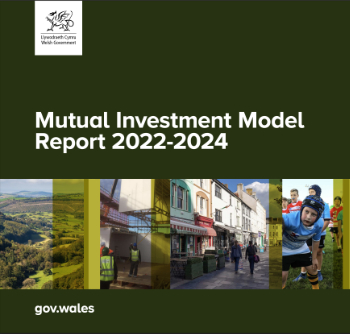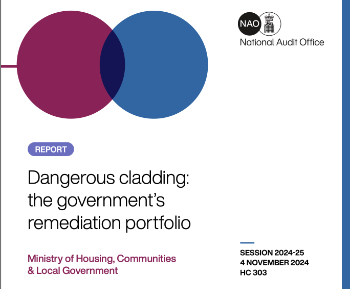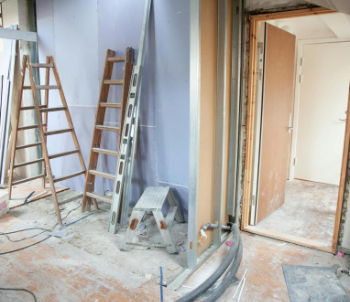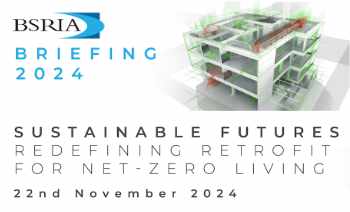External works
[edit] Introduction
The term ‘external works’ describes any works carried out to the external environment of a building project. These can be works to functional or aesthetic features.
BRE describe external works as: ‘All items outside the building footprint but inside the site boundary, encompassing wastewater and surface water drains, supply of utilities (e.g. gas, electricity and cabled services), footpaths, and access for vehicles including car parks and hard standings to be found in the vicinity of buildings.’ (Ref: BRE building elements: foundations, basements and external works)
RICS’s New Rules of Measurement Part 3 (NRM3) offers guidance on external works which it categorises as:
- Site preparation works.
- Roads, paths, pavings and surfacings.
- Soft landscaping, planting and irrigation systems.
- Fencing, railings and walls.
- External fixtures.
- External drainage.
- External services.
- Minor building works and ancillary buildings.
[edit] Site preparation works
Before construction works can begin, site clearance and preparatory groundworks are generally necessary. This might include.
- Removal of any vegetation including roots.
- Levelling the site to a roughly even gradient, or modelling the site to create the desired form.
- Setting out and trench lines.
- Establishing site offices, welfare facilities, storage, access routes, and so on.
[edit] Roads, paths, pavings, and surfacings
It is common for the external areas around buildings to require hard standing areas and surfacing features for use by workers, pedestrians and vehicles. These might include:
- Paving, kerbs, and edging.
- Asphalt or block surfacing to driveways, footpaths, car parks and roads.
- Timber decking, handrails and balustrades.
- Patios, platforms and so on.
[edit] Soft landscaping, planting and irrigation systems
Softscape or soft landscape includes all types of plant life, from flowers and trees to shrubs and groundcover. It naturally changes and evolves over time, driven by the climate, time of year and other conditions. Read more about soft landscape here.
Careful consideration should be given to the amount of maintenance that these elements will require to stay in good order. Read more about landscape design here.
Irrigation systems for gardens and external areas can be used to automate the process of watering. The most common forms are a drip irrigation systems that precisely releases water to the roots of plants, and a micro spray system that delivers a fine spray of water over a defined area. The benefit of installing such systems is their efficiency, delivering a water-use reduction of up to 90% compared to a traditional garden hose.
[edit] Fencing, railings and walls
These can be used to stop or cut down any unwanted pedestrian or vehicular access, to provide privacy, to give delineation between areas and so on. They can be low level such as wooden palisade fencing, or high level such as security fencing with concrete or metal posts and wire mesh. Wrought iron fencing can be finished with spikes or pointed designs, and features such as razor wire and anti-climb paints can be used to reduce scalability.
There may be a requirement for retaining walls to prevent ground slippage or heave.
[edit] External fixtures
These are fixtures that may be installed for functional or aesthetic purposes outside the building. The most common examples include:
- Bollards: Used as an alternative to fencing to restrict vehicular access and as segregation between pedestrians roads.
- Street furniture: This includes benches, bins, cycle stands, tree guards, lighting, signage, and so on. Within a town or city environment the layout and manufacture of these features may be used to create a period theme; for example, cast iron benches in a Victorian theme. Stainless steel or wood may be used in more contemporary or natural designs.
- Shelters: These may be required to provide protection from the elements. Bespoke shelters are often supplied by manufacturers for a range of purposes, from smoking shelters for office buildings, to cycle shelters, bus shelters, sports shelters, and so on.
[edit] External drainage
This might include:
- Foul drainage: Above-ground pipework is referred to as sanitary pipework, whilst underground pipework is referred to as foul drainage and sewers. Both carry used water from toilets, sinks, basins, baths, showers, bidets, dishwashers and washing machines.
- Surface water drainage: This carries water from rain, condensation and melted snow/ice from structures. The above-ground guttering and rainwater pipes are referred to collectively as roof drainage. The underground pipework is referred to as surface water drains and surface water sewers.
- Sustainable urban drainage systems: SUDS provide an alternative to, or addition to, traditional drainage systems and may include; filter strips and drains, swales, permeable surfaces, basins and ponds, underground storage, wetlands, and so on.
For more information, see Drainage.
[edit] External services
External services might include:
- Water mains supply.
- Electricity mains supply and distribution.
- External transformation devices (wind turbines, solar panels, satellite dishes).
- Gas mains supply.
- Telecommunications and other communication system connections.
- Fuel storage and piped distribution systems.
- External security systems.
- Site/street lighting systems.
- Irrigation systems.
- Local/district heating installations.
Ensuring that utilities are supplied to developments is vitally important, not just for the completed development, but also for the construction process itself. Developers will need to ensure that existing site information is obtained, and surveys carried out to determine the position, extent and capacity of existing services. They will need to agree with the provider, the design of any new infrastructure that is required, who will provide it, who will adopt it, and any charges, as well as the appropriate testing, inspection, certification, connection (or disconnection), installation of meters, and so on.
The costs associated with utilities can be significant, both in terms of the initial capital cost of installation (particularly if there is no existing supply or if the existing supply is inadequate) and ongoing bills during operation. It is important to ensure that the best deal is obtained from providers and that alternative quotes are obtained if possible.
During mobilisation for construction, the contractor will need to arrange for the necessary water, power and telecommunications services to enable the site to function.
[edit] Minor building works and ancillary buildings
There may be a requirement for buildings to serve the site during the course of the construction works that are generally removed upon completion, such as storage facilities, sanitary conveniences, washing facilities, changing rooms and lockers, canteens, site offices, and so on.
Minor building works might also include works such as underpinning existing buildings and boundaries, builders work in connection with site services, and so on.
[edit] Related articles on Designing Buildings Wiki
- BREEAM Hard landscaping and boundary protection.
- External environment.
- Garden.
- Groundworks.
- Landscape design.
- Mobilisation.
- NRM3.
- Site area.
- Site layout plan for construction.
- Smoking shelters.
- Soft landscape.
- Stakeholders.
- Statutory undertakers.
- Sustainable urban drainage systems.
- Temporary works.
- Third party dependencies.
- Underpinning.
- Utilities.
[edit] External references
- The Construction Centre - External works
- RICS draft guidance note – Benchmarking and cost analysis
Featured articles and news
Mutual Investment Models or MIMs
PPP or PFI, enhanced for public interest by the Welsh Government.
Stress Awareness Week and legal duties for employers
Calling employers to follow the five Rs this week.
Key points and relevance to construction of meeting, due to reconvene.
Cladding remediation programmes, transparency and target date.
National Audit Office issue report on cladding remediation.
HBPT and BEAMS Jubilees. Book review.
Does the first Labour budget deliver for the built environment?
What does the UK Budget mean for electrical contractors?
Mixed response as business pays, are there silver linings?
A brownfield housing boost for Liverpool
A 56 million investment from Homes England now approved.
Fostering a future-ready workforce through collaboration
Collaborative Futures: Competence, Capability and Capacity, published and available for download.
Considerate Constructors Scheme acquires Building A Safer Future
Acquisition defines a new era for safety in construction.
AT Awards evening 2024; the winners and finalists
Recognising professionals with outstanding achievements.
Reactions to the Autumn Budget announcement
And key elements of the quoted budget to rebuild Britain.
Chancellor of the Exchequer delivers Budget
Repairing, fixing, rebuilding, protecting and strengthening.
Connecting conservation research and practice with IHBC
State of the art heritage research & practice and guidance.
Innovative Silica Safety Toolkit
Receives funding boost in memory of construction visionary.
Gentle density and the current context of planning changes
How should designers deliver it now as it appears in NPPF.
Sustainable Futures. Redefining Retrofit for Net Zero Living
More speakers confirmed for BSRIA Briefing 2024.

























